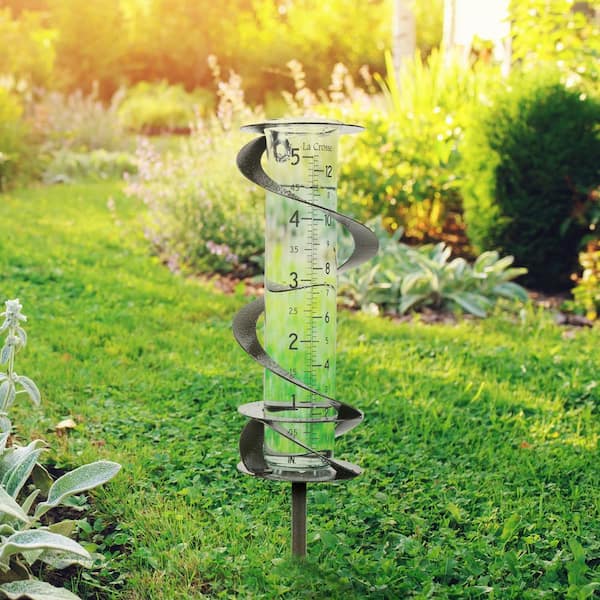How to Select the Right Rain Gauge for Reliable Precipitation Monitoring
How to Select the Right Rain Gauge for Reliable Precipitation Monitoring
Blog Article
Introducing the Scientific Research Behind Rainfall Evaluates: How These Instruments Play an Essential Duty in Environment Study and Ecological Tracking
Rainfall evaluates, relatively straightforward gadgets, hold an extensive importance in the realm of environment study and environmental tracking. These humble tools quietly gather among nature's most essential components-- rainfall. Behind their unpretentious facade lies a complicated scientific research that is crucial for understanding the dynamics of our atmosphere. As we peel back the layers of this scientific veil surrounding rain determines, we uncover a globe where accuracy, data precision, and thorough monitoring merge to introduce a much deeper understanding of our transforming climate and its impact on the world.
Significance of Rainfall Scales
Rain assesses play a crucial role in tracking and gauging precipitation levels, providing necessary information for climate study and analysis. These tools are fundamental in evaluating the quantity of rainfall that happens in a certain area over a specific duration. By measuring and gathering rainwater, rainfall determines offer useful insights right into the circulation and strength of rainfall, assisting meteorologists, hydrologists, and climatologists in comprehending climate patterns and fads.
Among the essential factors why rain gauges are crucial is their capability to offer precise and localized information. Unlike satellite or radar-based dimensions, which offer wider monitorings, rainfall gauges offer specific information details to the location where they are placed. This localized information is vital for various applications, consisting of flood projecting, drought tracking, and water resource management. Furthermore, long-term data gathered from rainfall gauges assists in examining climate modification influences and patterns, contributing dramatically to scientific research study and decision-making procedures. Essentially, rain determines work as necessary tools in the area of weather forecasting and ecological scientific research, playing a vital duty beforehand our understanding of climate and environment dynamics.
Sorts Of Rain Gauges

Capability and Procedure
In the realm of climate research and atmospheric studies, the performance of rain assesses lies in their detailed performance and exact functional devices. Rain evaluates are developed to properly measure the amount of rainfall that falls over a specific location during a collection duration.
The performance of rainfall evaluates is based upon the principle of gauging and gathering rain in a standardized fashion. This collected information is vital for recognizing local weather condition patterns, tracking long-lasting environment fads, and examining ecological effects. To guarantee accurate dimensions, rain determines need to be tactically placed in open locations far from obstructions such as buildings or trees that could hinder the collection process.
The functional element of rain evaluates includes normal upkeep to avoid particles build-up, calibration checks to preserve measurement precision, Home Page and data tape-recording for evaluation (rain gauge). In general, the performance and procedure of rain evaluates are essential for gathering dependable precipitation information vital to environment research and environmental surveillance
Role in Climate Research Study
Provided the crucial importance of exact precipitation dimensions in recognizing weather condition patterns and ecological effects, the duty of rainfall determines in climate study is essential. Rain gauges provide important data for climate research by evaluating the quantity of precipitation that drops over a certain area during a provided duration. This information is important for keeping an eye on lasting trends in precipitation patterns, examining the impact of climate change on rains distribution, and enhancing climate designs.

Environment researchers use data gathered from rainfall evaluates to analyze variants in rainfall degrees, recognize regional environment fads, and evaluate the performance of water source administration strategies. By comparing historical rainfall information with existing measurements, researchers can discover shifts in precipitation patterns, such as adjustments in the frequency or intensity of rains events. This details is important for comprehending how climate change is influencing rainfall dynamics and can aid policymakers make educated choices concerning adaptation and mitigation methods.
Applications in Environmental Tracking

In flooding forecasting, rainfall scale information assists to track rains strength and distribution, enabling authorities to provide timely cautions and take essential actions to reduce flood risks (rain gauge). Drought tracking relies upon rain scale data to analyze wetness degrees in the soil and track rainfall deficits, aiding in the recognition of drought-prone locations and the application of dry spell feedback methods
Furthermore, rainfall scale data plays a crucial role in water resource management by supplying info on water availability and usage trends. In addition, in agriculture, rain scale data helps farmers in maximizing watering timetables, plant selection, and general farm monitoring methods based on neighborhood precipitation patterns.
Final Thought
To conclude, rainfall evaluates are crucial tools for measuring precipitation, supplying beneficial data for environment research study and environmental tracking. With different kinds and performances, rainfall evaluates play an essential duty in understanding precipitation patterns and their influence on the atmosphere. By precisely determining rainfall, these devices add to the improvement of clinical knowledge and aid in making educated decisions pertaining to water source monitoring and calamity preparedness.
Rain gauges play an essential duty in surveillance and gauging precipitation levels, offering essential data for environment research and analysis. The standard rainfall scale, recognized as the "tipping pail" gauge, is one of the most typically her latest blog made use of gadgets. Ultrasonic rain evaluates usage noise waves to discover the existence of rainfall, giving real-time information on rainfall levels.Environment scientists utilize data accumulated from rainfall gauges to assess variations in rainfall degrees, determine local climate trends, and assess the performance of water source management approaches.In verdict, rain evaluates are essential tools for gauging rainfall, supplying important data for environment research study and environmental surveillance.
Report this page